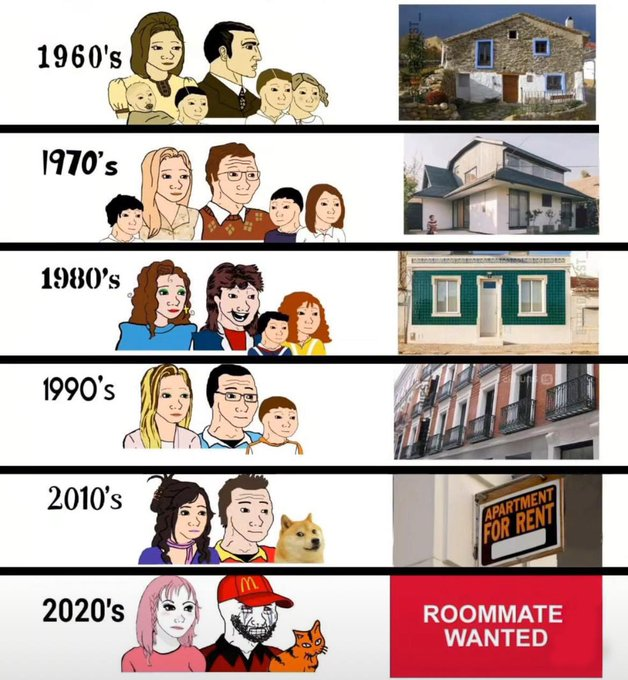this post was submitted on 12 Apr 2024
650 points (96.8% liked)
Political Memes
6177 readers
3396 users here now
Welcome to politcal memes!
These are our rules:
Be civil
Jokes are okay, but don’t intentionally harass or disturb any member of our community. Sexism, racism and bigotry are not allowed. Good faith argumentation only. No posts discouraging people to vote or shaming people for voting.
No misinformation
Don’t post any intentional misinformation. When asked by mods, provide sources for any claims you make.
Posts should be memes
Random pictures do not qualify as memes. Relevance to politics is required.
No bots, spam or self-promotion
Follow instance rules, ask for your bot to be allowed on this community.
founded 2 years ago
MODERATORS
you are viewing a single comment's thread
view the rest of the comments
view the rest of the comments

This is a gross oversimplification and in part just illogical. Yes, new small homes would help everyone out. But compare house prices to purchasing power then vs. now. It’s absolutely incomparable to 1960. That’s not because of square footage. And car ownership as an input here makes no sense. The costs of a downpayment and mortgage are simply out of reach for many people irrespective of car count. I say all this as a homeowner.
Purchasing power is a function of how much you spend on rent, which is a function of housing supply relative to demand, which is a function of the zoning laws comment-OP referred to.
purchasing power is a function of those zoning laws. When you disrupt the free market (like a zoning law that says you can’t put more than three units on an acre of land despite a hundred units being more profitable overall, just an example) people suffer and it gets worse over time. These effects build up.
Government meddling in the real estate market isn’t the only thing affecting that purchasing power, but it’s in the mix.
Just to be clear, I am not on the side of absolutely free market, but we have to recognize when certain policies are causing harm than good. For example, part of the increase is due to increased code regulations, but this is a good thing because it insulates (heh) consumers from from a number of hidden risks that the average consumer won't self-mitigate.
It really is not. I'm not saying there are no other economic challenges, but the vast majority of housing costs are effectively caused by this.
Here:
The median home price in 1960 was around 20,000. In inflation adjusted 2020 dollars that would have been close to 200,000.
This puts the price per square foot prices within the $100-150 range.
In 2020, the price per square foot was in the same range.
Wages have remained largely static. To be clear, this is NOT a good thing as productivity has skyrocketed, but is beside the point for now.
Effectively, the reason why people cannot afford a mortgage is massively influenced by the average size of home.
Cars make this fact even worse. On the mid to low income side of the economic spectrum, car ownership can easily cost 30% of household spending. A two car garage easily adds 10%+ to home costs.
Hm, you know, you’re right, that’s a fairer point than I expected. I think what I hadn’t appreciated (but do now, after thinking through your reply) was how much “back-pressure” the new home construction puts on the market. The current median house price is about double that 200k-equivalent figure, and while the growth in median house size doesn’t directly account for all of that, the availability of new houses is effectively throttled by the size increase so the prices of all houses rise.
I think it was hard for me to imagine, because I have a fairly small house (1800 sq. ft) bought recently, no garage, built in the 50s, oil heating (very old), and it was 600k. Which is massively expensive compared to 200k and has none of the “big excessive new house” traits you’ve mentioned. Median is median, though, I suppose.